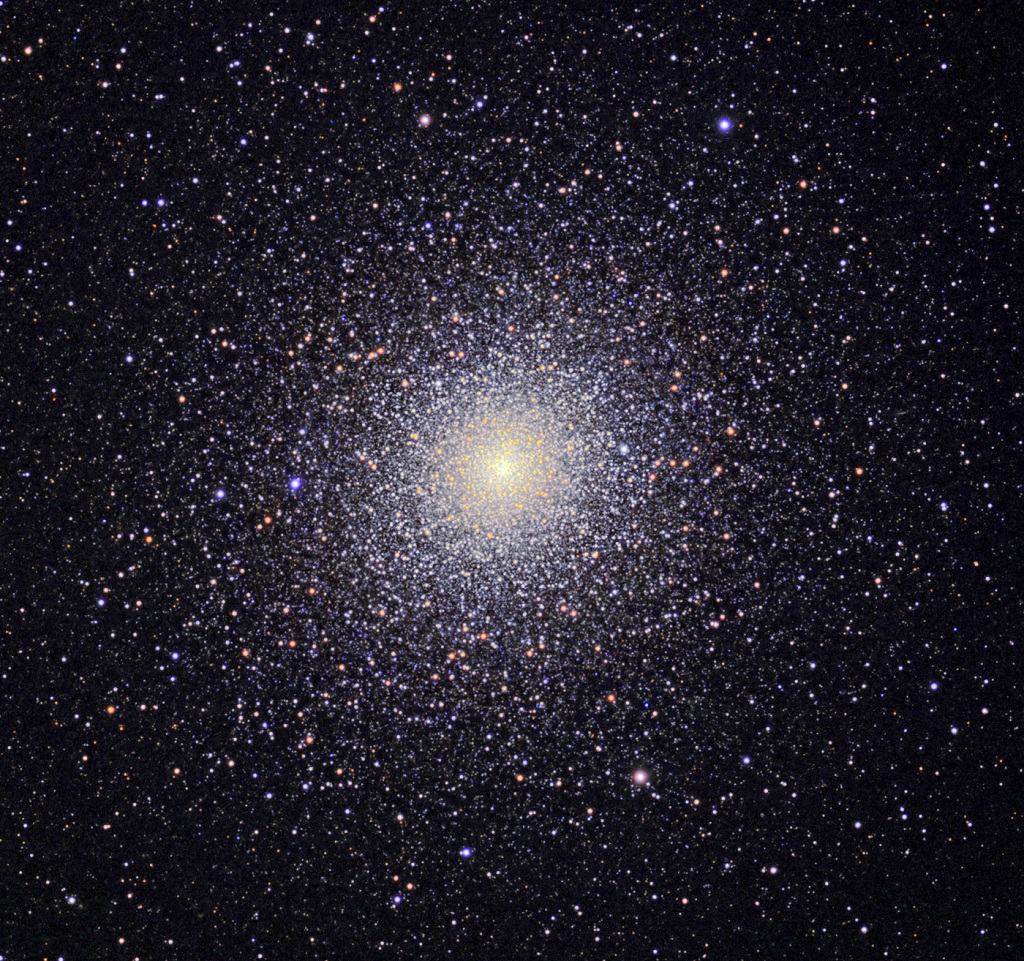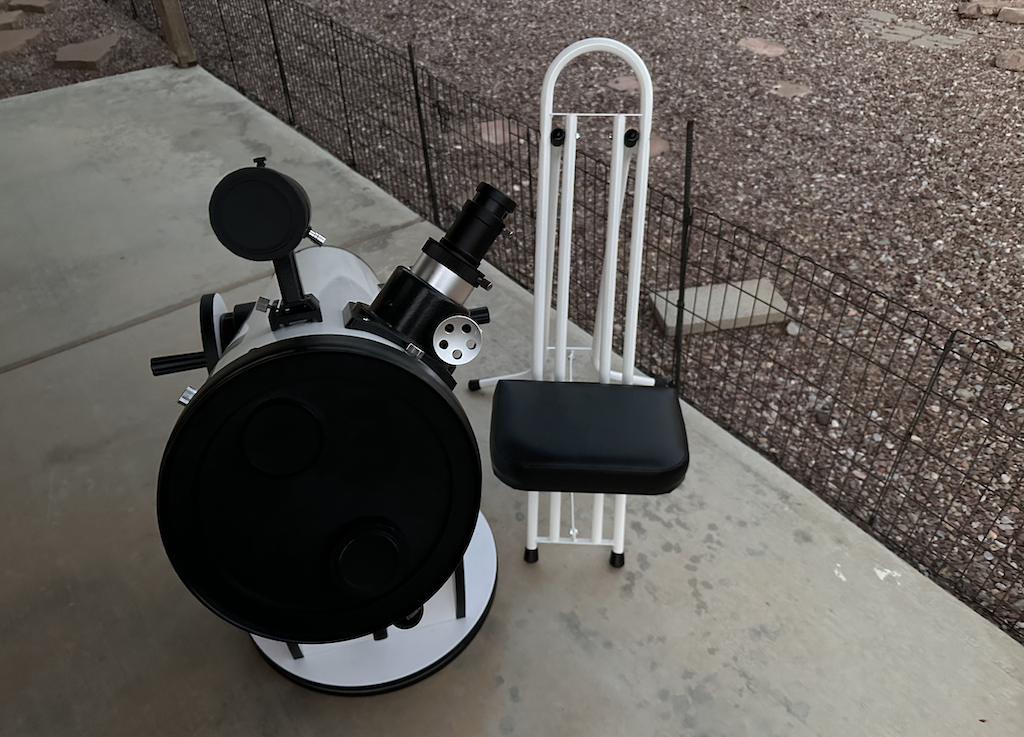Telescopes have been humanity’s windows to the cosmos for centuries, allowing us to peer into the depths of the universe and uncover its mysteries. One critical aspect of telescopes that significantly influences their performance is the aperture.
In this article, we will unravel the significance of telescope aperture, exploring its definition, role, and impact on astronomical observations.
What is Telescope Aperture?
The term “aperture” in the context of telescopes refers to the diameter of the main optical component that gathers light, typically a lens or a mirror. It is a crucial parameter that directly affects a telescope’s ability to capture and resolve faint celestial objects. Essentially, the aperture determines the telescope’s light-gathering power and its ability to produce detailed images.

Light-Gathering Power
One of the fundamental roles of a telescope is to collect and concentrate light from distant celestial objects.
The larger the aperture, the more light a telescope can gather, resulting in brighter and clearer images. The relationship between aperture and light-gathering power is not linear but rather proportional to the square of the aperture diameter. This means that doubling the aperture size results in a telescope capable of gathering four times as much light!
In practical terms, a telescope with a larger aperture allows astronomers to observe fainter objects, such as distant galaxies, nebulae, and faint stars, that would be nearly invisible through smaller telescopes. This increased light-gathering power is particularly advantageous for studying dim astronomical phenomena or capturing fine details in well-known celestial objects.
Want to get started in astronomy?
Our free telescope cheat sheet breaks down the key factors to choosing a telescope and shows you how to get stunning views of planets, nebula, and galaxies!

Observing Different Celestial Objects
The impact of telescope aperture on observations becomes evident when considering different types of celestial objects.
Observing Solar System Objects
When it comes to studying objects within our solar system, such as planets and moons, astronomers face considerations unique to the brightness of these celestial bodies. Planets like Jupiter and Saturn, along with our Moon, emit or reflect substantial amounts of light, making them accessible even with telescopes featuring smaller apertures. Telescopes with apertures in the range of 70mm to 90mm (approximately 2.8 to 3.5 inches) are often sufficient for capturing the prominent features of these well-lit bodies.
A smaller telescope, typically in the 70mm to 90mm range, is often more portable, user-friendly, and budget-friendly, making it an excellent choice for beginners or those prioritizing ease of use over exploring fainter, more distant celestial objects.
While smaller telescopes with modest apertures are perfectly adequate for solar system observations, it is essential to acknowledge that a larger aperture can still play a role in enhancing the clarity and detail of these objects.
The intrinsic brilliance of planets and moons ensures that observers can appreciate their features with a variety of telescopes.
However, when it comes to capturing intricate details such as the cloud bands of Jupiter or the divisions within Saturn’s rings, a larger aperture telescope becomes advantageous. Telescopes with apertures in the range of 100mm to 150mm+ (approximately 3.9 to 5.9 inches or more) offer additional light-gathering power, enabling astronomers to unveil finer features and nuances, providing a more immersive experience.
In essence, the choice between a smaller and larger aperture telescope for solar system observations hinges on individual preferences and practical considerations. For those who value portability and simplicity in setup, a telescope in the 70mm to 90mm range may be the preferred option.
However, for enthusiasts seeking to delve deeper into the intricacies of planetary atmospheres and surfaces, a larger aperture telescope, in the range of 100mm to 150mm+, becomes an investment in realizing these specific observational goals.
Ultimately, the decision is a balance between the convenience of a smaller aperture and the potential for enhanced detail offered by a larger telescope.

Deep-Sky Objects
When it comes to exploring the vast realm of deep-sky objects—galaxies, nebulae, and star clusters—a telescope’s aperture plays a pivotal role in revealing the intricate details of these celestial wonders. Telescopes with larger apertures, typically in the range of 150mm to 200mm (approximately 5.9 to 7.9 inches) or even larger, excel in capturing the faint light emitted by these objects that are often spread across the night sky.
Smaller telescopes, with apertures in the range of 80mm to 120mm (approximately 3.1 to 4.7 inches), can certainly offer glimpses of some deep-sky objects, but their ability to resolve fine details is limited. Larger apertures are particularly advantageous when it comes to unveiling the intricacies of distant galaxies. Telescopes with apertures exceeding 150mm provide the light-gathering power necessary to discern features such as spiral arms and subtle structures within galaxies.
Nebulae, clouds of gas and dust where stars are born, are another category of deep-sky objects that benefit significantly from larger apertures. Telescopes with apertures in the 150mm to 200mm range allow observers to perceive the delicate filaments and intricate shapes within nebulae. The increased light-gathering capability of larger apertures enhances the contrast and detail in these cosmic clouds, providing a more immersive viewing experience.
Star clusters, both open and globular, also reveal more of their splendor when observed through telescopes with larger apertures. The densely packed stars in globular clusters and the intricate arrangements in open clusters become more pronounced and captivating with the improved resolution provided by larger apertures.
In summary, while smaller telescopes can offer introductory views of deep-sky objects, telescopes with larger apertures, typically 150mm and above, truly excel in unveiling the hidden beauty of galaxies, nebulae, and star clusters. The increased light-gathering power and improved resolving capability make larger aperture telescopes the instrument of choice for astronomers passionate about exploring the depths of the night sky.

Real-World Examples
To illustrate the impact of telescope aperture, let’s explore real-world examples across various celestial observations:
Ring Nebula (M57)
The Ring Nebula, located in the constellation Lyra, is a popular target for amateur astronomers. With a smaller telescope, you might see it as a faint, blurry ring. However, a larger aperture telescope reveals intricate details, showcasing the nebula’s central star and the subtle variations in brightness and (some even say color) across the ring structure.
Craters on the Moon
Lunar observations offer a unique chance to experience the impact of telescope aperture on resolving power. A smaller telescope may reveal well-known lunar features like the prominent craters Tycho and Copernicus.
However, a larger aperture telescope goes beyond, unveiling finer details within these larger formations, bringing out the intricate features of Tycho’s central peak or the terraced walls of Copernicus. The shadows and relief of the lunar landscape become notably pronounced with the increased resolving power of a larger aperture, providing observers with a more immersive and detailed view of these captivating lunar features.
Orion Nebula (M42)
The Orion Nebula is a stellar nursery located in the sword of Orion. With a smaller telescope, you might see a fuzzy patch of light. However, a telescope with a larger aperture exposes the intricate filaments of the nebula, revealing the Trapezium Cluster at its core and the subtle hues of the surrounding gas and dust.
Saturn’s Rings
Saturn, with its iconic rings, is a favorite target for astronomers. A smaller telescope can show the rings, but a larger aperture telescope provides a more immersive experience. The Cassini Division, a gap in Saturn’s rings, becomes more discernible, and subtle details like the shadow of the rings on the planet’s surface become apparent with increased aperture.
Globular Clusters
Globular clusters, such as Messier 13 (Hercules Cluster), contain thousands of tightly packed stars. Through a smaller telescope, these clusters may appear as faint smudges. However, a larger aperture telescope resolves individual stars within the cluster, allowing observers to appreciate the cluster’s structure and the density of stars toward its core.
Binary Star Systems
Telescopes with larger apertures excel at resolving binary star systems, where two stars orbit each other. A smaller telescope might merge the two stars into a single point of light, while a larger aperture telescope reveals the distinct components of the binary system and their orbital dynamics.
Hubble Space Telescope Images
While not an example for amateur astronomers, the Hubble Space Telescope serves as a testament to the power of large apertures. Its breathtaking images of distant galaxies, nebulae, and other cosmic phenomena showcase the unparalleled capabilities of a telescope equipped with a substantial aperture.
Want to get started in astronomy?
Our free telescope cheat sheet breaks down the key factors to choosing a telescope and shows you how to get stunning views of planets, nebula, and galaxies!

Conclusion
Telescope aperture stands as a fundamental parameter that influences the performance and capabilities of astronomical instruments. Its role in determining light-gathering power makes it a crucial factor in the observer’s ability to explore and appreciate the wonders of the universe.
As technology advances, astronomers continue to push the boundaries of telescope design and construction. New materials and innovative engineering solutions are expanding the possibilities for larger apertures, enabling us to explore the cosmos with unprecedented clarity and detail. Whether you are a seasoned astronomer or a novice enthusiast, understanding the importance of telescope aperture will guide you in choosing the right instrument for your cosmic explorations.






